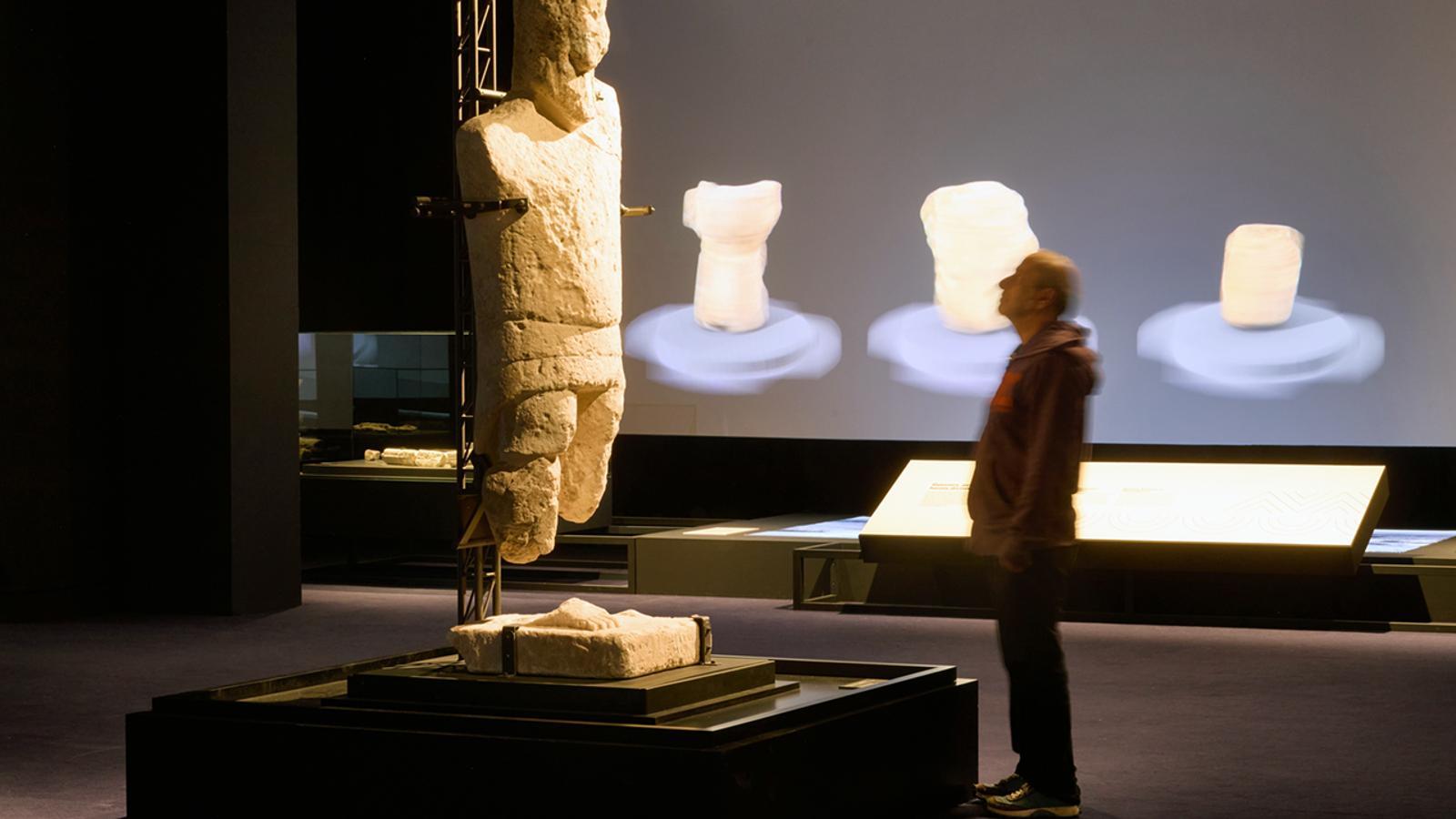'Sardinia: The Megalithic Island': A fascinating journey to discover Sardinian prehistory
The Archaeology Museum of Catalonia offers an exhibition until November 2nd that showcases the island's unique Nuragic civilization, from the Neolithic to well into the Iron Age.

'Sardinia: The Megalithic Island' is the title of the exhibition that opened on April 16th and can be visited at the Archaeology Museum of Catalonia (MAC) in Barcelona until November 2, 2025. The exhibition, which incorporates one of the giants of the Mont'e Prama necropolis in Cabras with more than 200 exceptional archaeological objects, presents the richness and diversity of Sardinian megalithism, and at the same time, sheds light on the ways of life, customs, and traditions of the Nuragic civilization.
The island of Sardinia is the second largest in the Mediterranean and has played an essential role in the exchange between civilizations throughout history. A testament to original cultures and civilizations that have left behind unique monumental structures that are now a characteristic feature of the Sardinian landscape, these elements have both fascinated and challenged many generations who have tried to interpret their meaning.
The sample It exhibits 200 unique archaeological objects from various Sardinian museums. One of the star exhibits is a stone giant from the Mont'e Prama necropolis, dating from 850-750 BC, considered by some to be one of the earliest free-standing sculptures in the western Mediterranean. The exhibition offers visitors a complete immersion in Nuragic culture, achieved in part by accompanying models and 3D reconstructions that allow them to visit and explore many corners and landscapes of the island.
The journey through Sardinia: the megalithic island
This exhibition has been shown in leading museums around the world before arriving in Barcelona. It has been shown in four international museums: first, the Museum of Prehistory and Early History in Berlin, Germany; second, the Hermitage in St. Petersburg, Russia; third, the Archaeological Museum of Thessaloniki, Greece; and finally, it was installed in the National Archaeological Museum of Naples, Italy.
The exhibition was promoted by the Mont'e Prama Foundation, with funding from the Autonomous Region of Sardinia, "Grand Mont'e Prama Project"; in collaboration with the Ministry of Culture of the Italian Republic - Directorate General for Museums; the Regional Directorate of National Museums of Sardinia; the National Museum of Cagliari; and the municipality of Cabras. We also acknowledge the collaboration of the Italian Embassy in Madrid, the Consulate General of Italy in Barcelona, and the Italian Institute of Culture in Barcelona. The overall organization was carried out by Villaggio Globale International.
The exhibition is structured into six areas:
-
The first megalithism
A phenomenon that occurs independently in different parts of the world and at different times and involves the use of large stones.
-
The Nuraghes
Mysterious ancient monuments that have characterized the Sardinian landscape for millennia.
-
The Tombs of the Giants
More than 800 collective graves have been documented throughout the island.
-
The sanctuaries
Dedicated to the worship of water, such as fountains and sacred wells.
-
Megalithism
The sunset of megalithism with the stoppage of construction by the Nuragese from the 12th - 11th centuries BC and the necropolis of Mont'e Prama.
-
The Nuragic heritage
With the reoccupation of the Nuragic structures during the Roman period and the Middle Ages.
